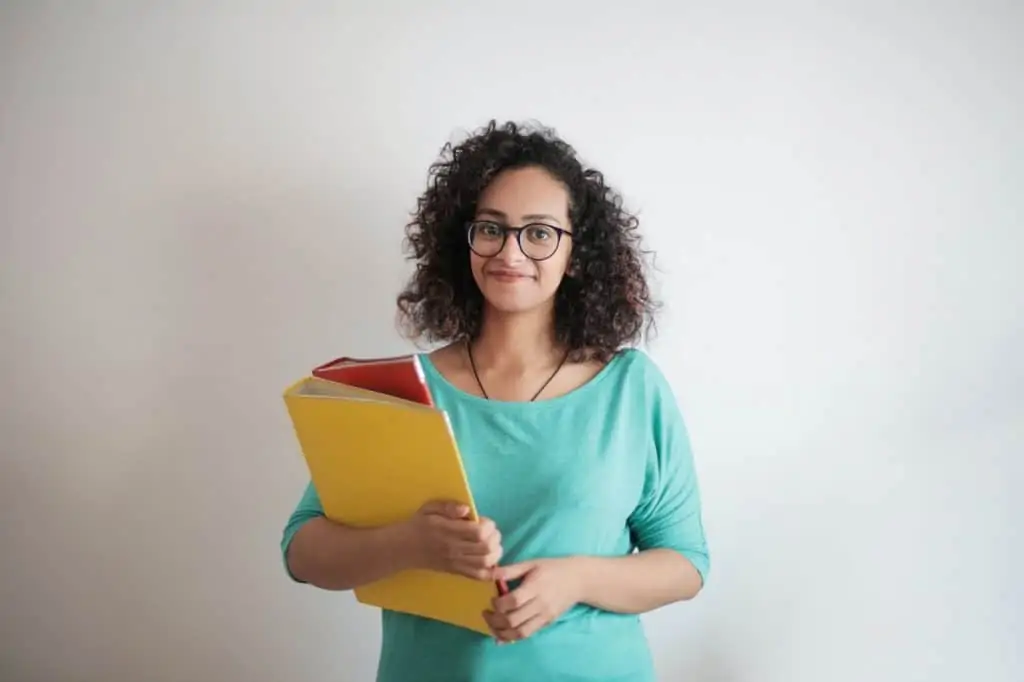Howdy! If you’ve ever asked yourself, “What is cognitive learning?”, then you’ve come to the right place. Is this lesson on cognitive learning going to teach you in a cognitive-learning style? Or will we subject you to rote memorization? Read on to find out!
(And if it’s rote memorization, you can always duck out early. You don’t owe us any tests or homework).
What the Heck is Cognitive Learning?
Some smart cookies may have picked out the word ‘cognitive’ in the phrase ‘cognitive learning.’ To ‘cognate’ means to think, and ‘cognition’ means thought, as some extra-smart, double chocolate chip cookies may have realized, so ‘cognitive learning’ probably refers to some kind of thinking-based learning, right? And for those of you who picked out the word ‘learning’ and decided that ‘cognitive learning’ was referring to a type of learning… way to go! You’re right!
But let’s get down to it: what is cognitive learning? The cognitive learning theory definition is nebulous — or rather, very specific, and subtly different, depending on which source you consult — which means, basically, that “cognitive learning” is an umbrella term for new methods and styles of learning that engage the brain and rely on application more than rote memorization. The key is to tie knowledge together in a student’s mind, connecting facts, dates, and events, so that a student develops a network of information rather than a list of names and numbers.
Let’s look at some cognitive learning examples to get a better idea of this:
What Does Cognitive Learning Mainly Focus On?
Cognitive learning focuses on figuring out how brains learn, so that we can teach in the most effective way.
Cognitive learning psychology emphasizes understanding and connections in learning, and holds these as far more important than simple memorization. Basically, the key to imparting knowledge is not stuffing as many facts as can fit into one’s head. It is far more important to establish strong connections between certain facts, a sort of mental ‘quality over quantity.’
What are 9 Main Benefits of Cognitive Learning?
Let’s take a look at the benefits of cognitive learning (and maybe if they make sense to you, you won’t have to scroll back up and look at them again!).
1. Longer retention
When you have a deeper connection with knowledge, you are more likely to retain it, whether that knowledge be a detailed description of some process or event, or simply a number, like July 4th, 1776, or 3.14159.
Using these two examples, you can begin to see why. You probably don’t remember when you first became aware of the 4th of July — it’s been Independence Day before you began thinking of July as a summer month, before you could write out the date in legible handwriting. Similarly, you’ve dealt with pi for so long that you no longer have to page through a middle school textbook to remember that π = 3.14.
2. Better problem-solving
A lot of cognitive learning emphasizes learning by doing, so you will gain experience figuring out solutions for yourself! Go independence!
3. Advanced self-teaching skills
Those will serve you in college.
4. Shorter cramming time
When the information is already laid out in a web in your mind, it’s easier to pick up the web, go over its main points — the different models of motion in physics; a quick series of diagrams in biology — and then hone in on the parts that need a little polishing.
5. Increased test-taking confidence
Also, it’s easier to guess your way to forgotten dates or equations if you have a good grasp of the events or elements surrounding them. When was Lincoln assassinated? Well, after the Civil War ended (April 13, 1865), and definitely before Grant’s presidency (1869-1877), so… April 15, 1865? (this is, as you may guess, a bit easier on multiple-choice tests than pulling numbers out of the blue).
6. Improved self-awareness
Knowing how you learn is important — nearly as important as learning itself, because this is information you will use again and again throughout your academic career!
7. Practical experience
Learning by doing requires a fair bit of doing. The great thing about this is that you pick up skills that you truly could not learn in a classroom. You can study the blueprints for a robot, but only assembling that robot yourself will teach you persistence, how to overcome frustration, how to deal with a team — all of which will serve you later in life (even if the robot doesn’t).
8. Increased independence.
While cognitive learning is frequently and effectively utilized by educators, learning by doing gives you the sense that you can teach yourself — which is true! Cognitive learning psychology allows you to take learning into your own hands.
9. Overall improved self-confidence
It feels good to know you know something. It feels great to know you can teach yourself again if you forget. You have the power of learning at your fingertips.
What are the Levels of Cognitive Learning?
The levels of cognitive learning aren’t difficult to learn. The first level is memorization, as in memorizing the three levels. The other two levels, for sake of example, are understanding and application — got it?
Here, you could memorize the names of the three levels even if you don’t speak any English. But to reach the next level of cognitive learning — that is, understanding — you’d have to know what those words meant, hopefully with a little background. You can tie this model to other learning models you have seen before, make connections, and spot similarities and differences.
Finally, application. If you can use what you’ve learned to do something new, then it’s sure proof that your have really learned it. In this example, application would be realized by you being more aware of your own learning, and noticing the levels of cognitive learning when you tackle a new lesson.
To use another example, take the physics equation F = ma. You could memorize the equation and achieve the first level of cognitive learning quite easily. To reach the next level, you would need to understand that ‘F’ stands for ‘force,’ ‘m’ stands for ‘mass,’ and ‘a’ stands for ‘acceleration.’ Furthermore, you would need to brush up on what force and acceleration mean in a scientific context (you probably already know mass). Then, to reach the highest level of cognitive learning, you would apply this equation — not simply by finding force if given mass and acceleration, but also being able to manipulate the equation. One who has truly learned physics is able to find mass if given force and acceleration, and is able to relate this equation to other physics equations to isolate and identify other variables as well.
Is Cognitive Learning Better or More Effective Than Other Methods?
In a word, yes. This is in part because there are many different cognitive learning styles, so even if one style is not for you, another may well hit your sweet spot.
That said, the key to a well developed education is balance. Cognitive learning, ie making connections between topics, grounding your knowledge in real-world experience, and learning with peers, actions, or self-discovery, gives you a plethora of tools and skills to gain further knowledge. Even with all that, though, you might have to turn back to the flashcards or Quizlet when a particular vocab test rolls around. There are only so many ways to get a list of words and definitions, or events and dates, from the page into your mind.
9 Cognitive Based Learning Activities and Examples for Teachers
It’s easy to incorporate cognitive learning in your teaching strategies! To be honest, schools across America have already begun incorporating some cognitive learning examples in the classroom, so you won’t be breaking new ground, precisely — just travelling through the fresh earth of newly broken ground.
The good thing about cognitive learning is that it applies literally everywhere; it’s just a better, more interactive method of learning. So let’s dive in!
1. Physics: Falling rocks.
Re-create a simplified version of Galileo’s famous experiment and prove a few basic physics equations along the way!
This one requires a little physics explanation, be warned:
Galileo Galilei once dropped two spheres of different mass off the Tower of Pisa. He did this to prove that the time it takes an object to fall is not related to its mass; a small sphere and a large sphere would hit the ground at the same time. (He tied the spheres together, for complicated reasons; feel free to investigate further!)
Take the equation d = v0t + .5at2. This is an equation for the distance of a moving object — in our case, a falling rock. d = distance, v0 = initial velocity (in our case, 0), a = acceleration (the force of gravity, in our case), and t = time. Manipulating the equation gives us t = √(2d/a). This suggests that the time, t, it takes a rock to travel some distance, d, is independent of mass — notice there is no mass involved in this equation. So test that!
The test itself is easy; the bulk of the lesson lies in explaining these formulas in far greater depth. At the culmination of the lesson, set a timer, a rock-dropper, and some observers. Then find a suitably high location and drop rocks (and other objects) of different sizes! You should find that, allowing for margin of error, they all fall at the same speed, regardless of whether you are dropping a pebble or a brick.
2. Chemistry: Lab session.
Fortunately for anyone interested in chemistry, most chem classes already include lab sessions, to target the ‘application’ level of cognitive learning — and to have fun indulging your inner mad scientist!
One particularly interesting experiment is the precipitation of silver from silver nitrate. We’ll spare you the chemistry lecture, but basically silver nitrate, AgNO3, is a dry compound which easily breaks apart in water into Ag+ (silver ion) and NO3– (nitrate ion). From there it is possible to remove the nitrate and precipitate pure silver, which certainly feels like alchemy from the days of yore.
This lesson would be structured by first giving a thorough explanation of ionic compounds, using silver nitrate as an example. Students would calculate the reaction equations, and predict how much silver they will precipitate given a certain amount of silver nitrate to begin.
3. Biology: evolution today.
Biology is all about understanding life, and most basic bio classes include a diagram of the various kingdoms under which species are classified. Think of it as a sort of evolutionary family tree: you can see how different species split off, and which species are more closely related to one another biologically.
Have students show this in real life by choosing a few, similar species, and tracing their particular lines of the evolutionary ‘family tree’ back to a common ancestor. Have students highlight similarities between the species, as well as differences, and point to how those differences could have evolved. A simple example are various species of cat: the cheetah evolved its speed for hunting in a specialized environment, with a certain, very fast prey, and the snow leopard evolved its shaggy coat and massive tail to keep warm in cold climates.
Because this project can be done at a surface level, or in more depth, it is suitable for most any age group.
4. Astronomy: Spinning Earth.
Use models to show how the earth spins as it goes around the sun, and how this leads to night and day! It’s quite simple:
Get a sphere and a flashlight. Have one student hold the flashlight, the ‘sun,’ in the center of the classroom, while another holds the ‘earth’ and rotates it. Students can see visually how the light shines on one half of the earth, while the other half is in darkness.
This is a simple demonstration and can be completed with kindergarteners. Add a little more science, a few physics equations, and it’s suitable for honors classes in high school!
5. English: Copy classic styles.
English classes often discuss the style and rhetorical devices used by different authors, from the mundane to the Faulknarian. Have students really understand these different styles by assigning a creative paper written in the style of an author read in class. This will make students focus on the particularities of the author, and truly hear their voice. And if the assignment veers in the direction of parody, don’t worry!
6. Language: Associative learning.
A simpler way to phrase this is ‘hand motions.’ Associate certain hand motions with certain words — for example, mime turning a steering wheel when learning the word for ‘car,’ or make the motion of digging with the word for ‘shovel.’ Associative learning can seem like more work at first, but in the long run, it enhances memory.
7. History: Relating Events.
We think of history as memorizing a lot of names and facts. One way to promote understanding and application of these facts is to relate historical events to one another, or to the modern era. For example, students could examine the colonization of the Americas in the 16th and 17th centuries, and compare and contrast with the colonization of Africa in the 18th and 19th centuries.
8. Computer science: Coding.
Most computer science classes focus heavily on coding — that is, having students write code themselves, test it, and ultimately see it work. This is an ideal application of the memorize, understand, apply model of cognitive learning. Way to go, coders!
9. History: Cause and effect timeline.
Give students a few major events. We’re all brushed up on Western history thanks to a few centuries of Western hegemony and Euro-centric learning, so let’s use that for an example. Take these three major events: the Borgia papacy (1492-1503), Martin Luther’s 95 Theses (1517), and the Thirty Years’ War (1618-1648, but given the name, you’ve really only got to remember one of those years).
Simple, right? Right. If you kept reading and skipped this paragraph, you would not remember any of those events. But if you looked at the common threads between them, how one indirectly led to the next, then you might remember all three. So: The Borgia papacy was a period in which the Catholic Church was headed by a Pope who was quite scandalous for his time — he spent fortunes on luxuries, slept with various mistresses, and please, drop a line, specifically the line “banquet of chestnuts,” into a Google search bar. All told, many people were frustrated by what they saw as behavior unbecoming of a religious leader. This and other things led to Martin Luther posting his 95 Theses and thereby founding Protestantism. Protestantism in its many forms spread through Europe like wildfire, especially in modern-day Germany, where the many princes converted to Lutheranism… possibly to win more power from their Emperor. This led, eventually, to the Thirty Years War, which failed to convert the princes back to Catholicism, but did manage to involve many other countries in Europe and spill a lot of blood.
Hooray, you read it! Hopefully you can see how understanding a little bit of context can make three heretofore meaningless names have a little meaning, and take up a little space in your mind. If you look up the Banquet of Chestnuts, you definitely won’t forget.
Wrapping Things Up: Key Takeaways on Cognitive Learning
We hope that you have learned how to apply cognitive learning to your teaching or studying — and maybe you have picked up a few science or history facts on the way! The key of cognitive learning, to review, is simply to go beyond memorization and make sure you (or your students) understand whatever concept you are learning, particularly by tying it to past experience or other lessons. Then, to solidify your knowledge, apply it in the classroom or in the outside world — this can be as easy as seeing connections between history and now, or doing practice problems, or completing a lab.
Go forth and learn!
Did you find this post helpful? Read more of our high school guides here.
> When Is the Best Time to Study For Your Brain?















